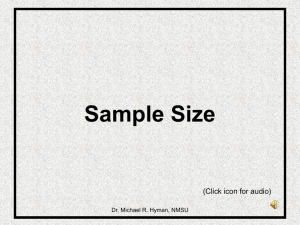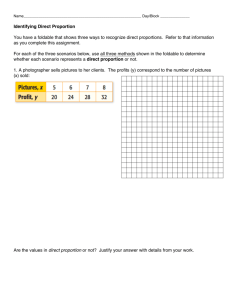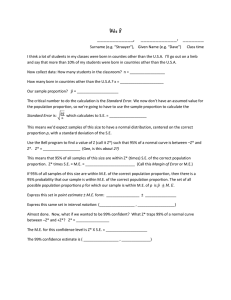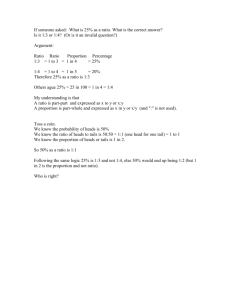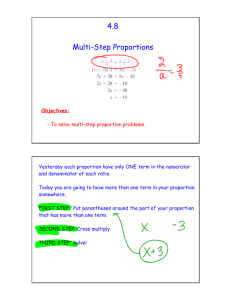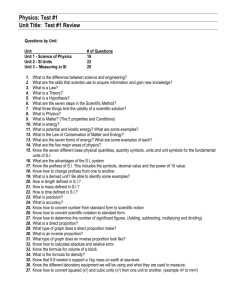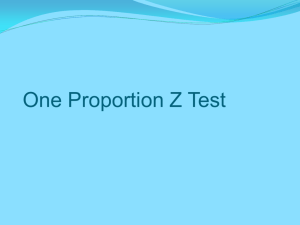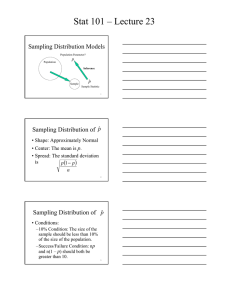Sample Size Required, Finite Population, Survey with Dichotomous
advertisement
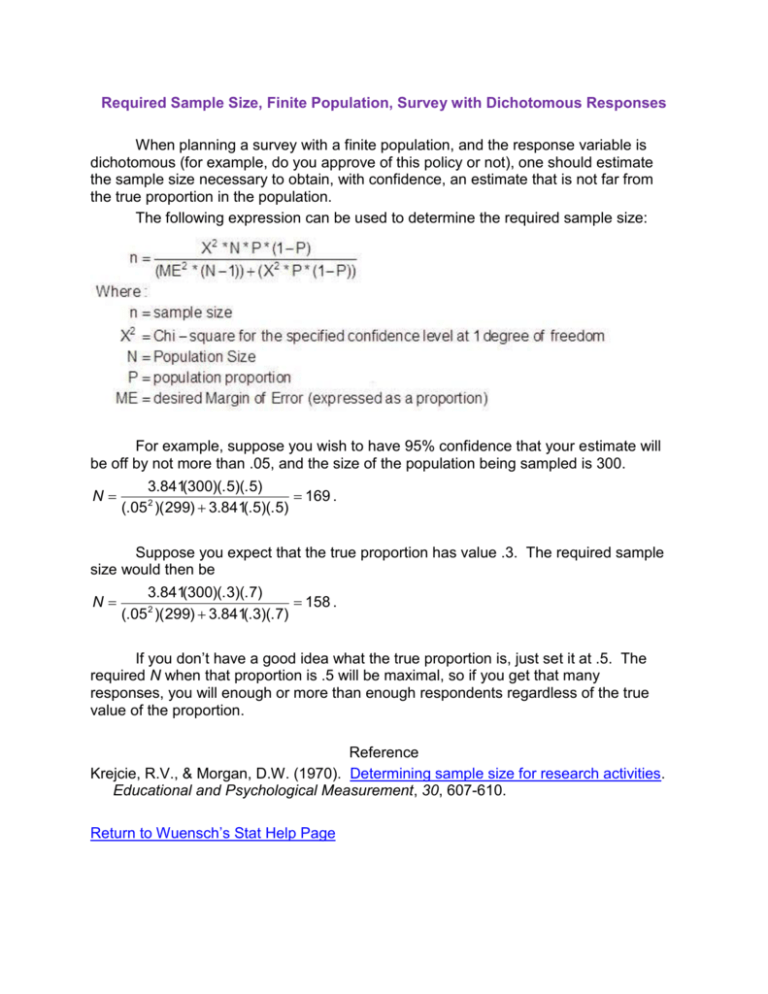
Required Sample Size, Finite Population, Survey with Dichotomous Responses When planning a survey with a finite population, and the response variable is dichotomous (for example, do you approve of this policy or not), one should estimate the sample size necessary to obtain, with confidence, an estimate that is not far from the true proportion in the population. The following expression can be used to determine the required sample size: For example, suppose you wish to have 95% confidence that your estimate will be off by not more than .05, and the size of the population being sampled is 300. N 3.841(300)(. 5)(. 5) 169 . (.05 2 )( 299) 3.841(.5)(. 5) Suppose you expect that the true proportion has value .3. The required sample size would then be N 3.841(300)(. 3)(. 7) 158 . (.05 2 )( 299) 3.841(.3)(. 7) If you don’t have a good idea what the true proportion is, just set it at .5. The required N when that proportion is .5 will be maximal, so if you get that many responses, you will enough or more than enough respondents regardless of the true value of the proportion. Reference Krejcie, R.V., & Morgan, D.W. (1970). Determining sample size for research activities. Educational and Psychological Measurement, 30, 607-610. Return to Wuensch’s Stat Help Page

